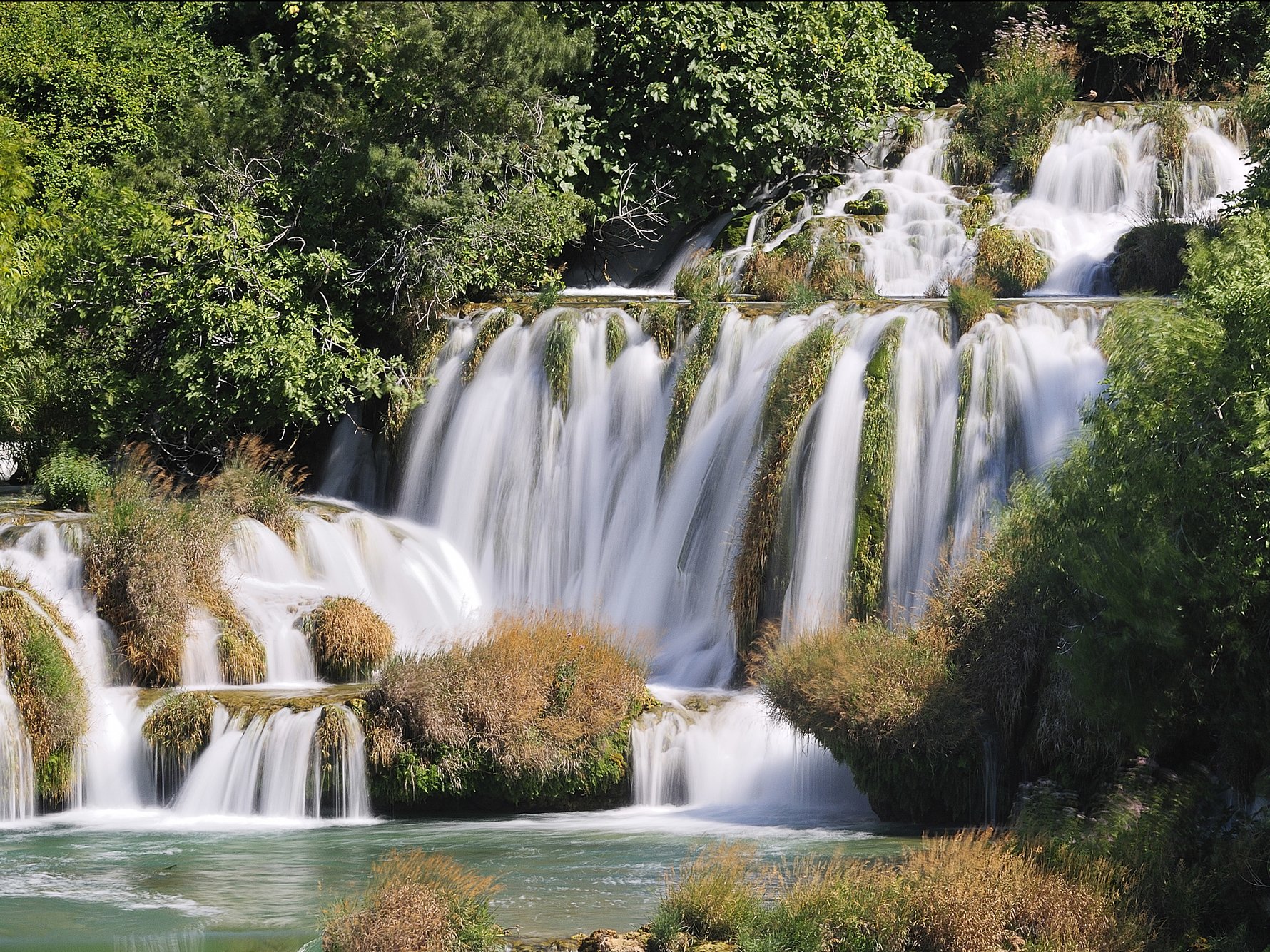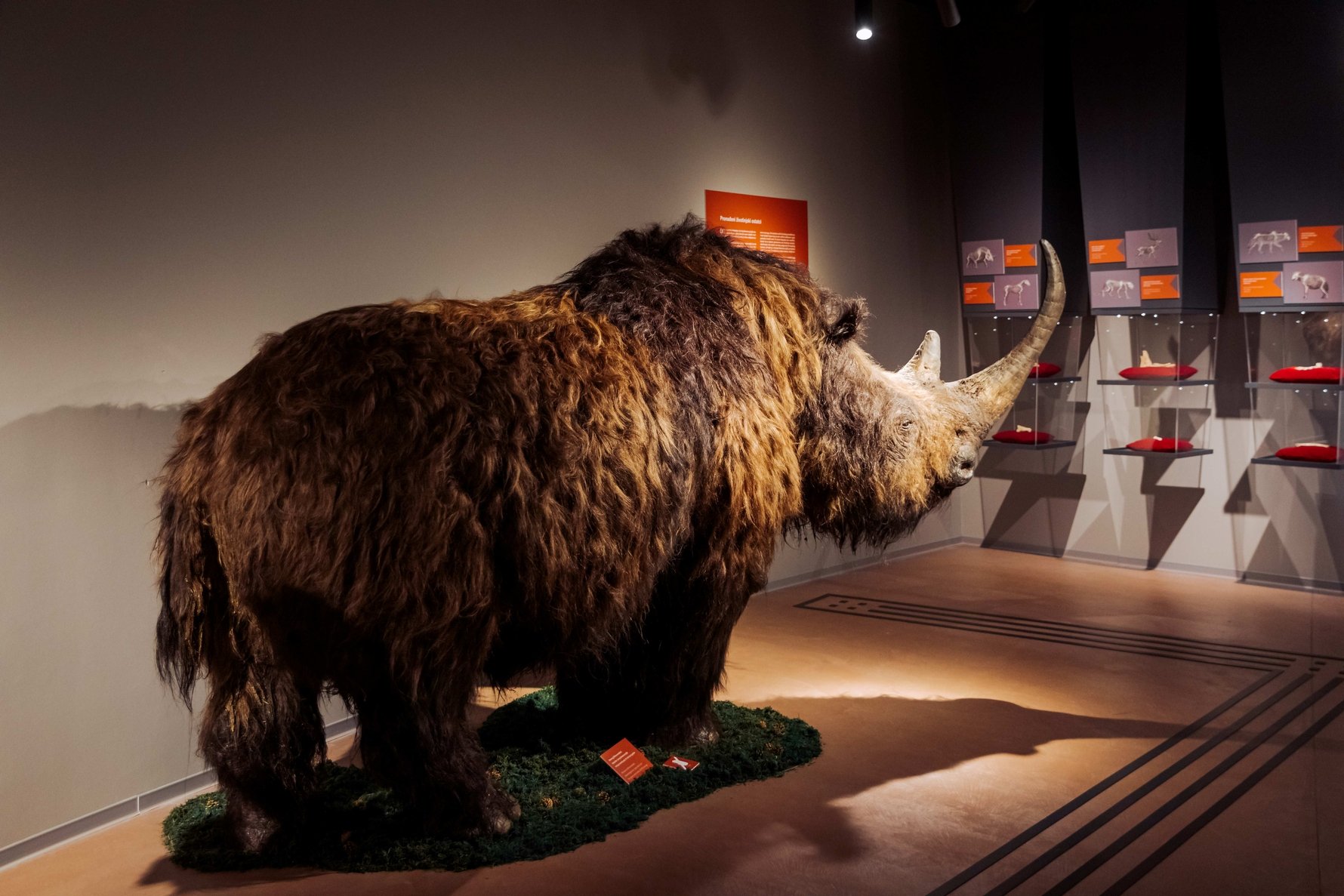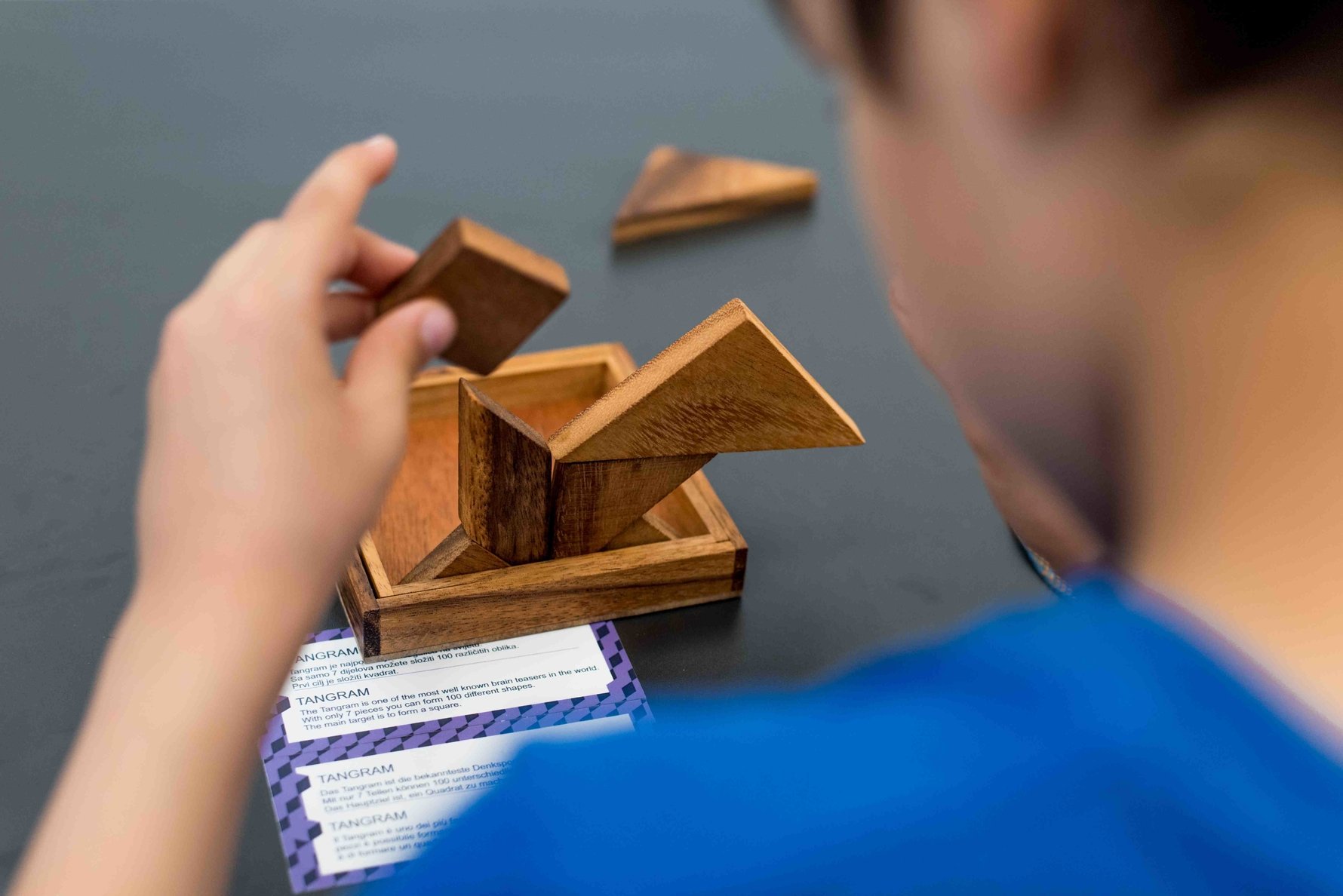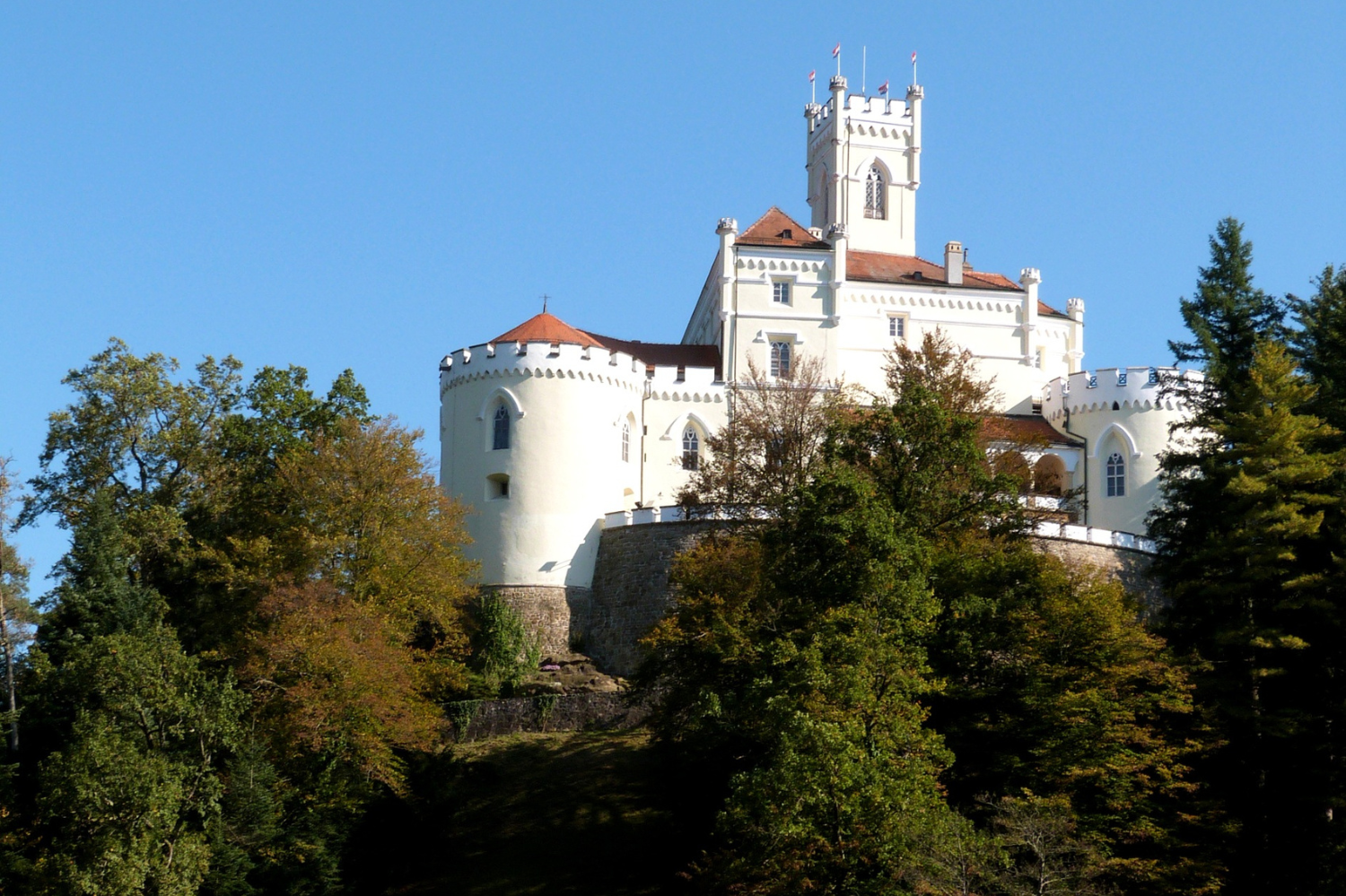Croatia has never been so full of things for families with children. Always a family-friendly destination, Croatia’s provision for kids has taken off in recent years, with a whole new generation of activities and attractions specifically designed with younger visitors in mind.
Nature Parks and Caves
Both the Plitvice National Park (www.np-plitvicka-jezera.hr) and the Krka National Park (www.np-krka.hr) are outstanding destinations that seem designed for that perfect family day out – which one of them you choose will largely depend where you are staying and how it fits in with the rest of your holiday itinerary. Plitvice National Park consists of a chain of lakes connected by tumbling cataracts; wooden walkways take you above the gurgling waters, and a network of boats and electric buses will ferry you from one end of the park to another. Krka offers a similar mixture of walking and boating, with chances to visit historic water-millsand monasteries thrown in.In southeastern Croatia, the reedy wetlands of the Kopački Rit Nature Park (pp-kopacki-rit.hr) offer the chance to enjoy a boat trip on the forest-shrouded Lake Sakadaš.
To learn more about the big beasts of Croatia’s forests then head for the Large Carnivores Visitors Centre in Stara Sušica (www.centar-velikezvijeri.eu),where a multi-media display introduces you to the lives of the bears and wolves of the Gorski Kotar. An exhilarating introduction to the region’s birds of prey is provided by the Falcon Centre just outside Šibenik (www.sokolarskicentar.com), with its demonstrations offalcon-handling.
One of the undoubted highlights of the Croatian underworld is Baredine Cave near Poreč (www.baredine.com), a treasure trove of stalagtites and stalagmites formed by several million years of water seepage. A 300-metre walkway leads through a sequence of astounding chambers; the cave is also home to an amphibious creature known as the olm, dubbed the “human fish” on account of its slender white body with agile arms and legs.
Something of an outlier, but extremely worthwhile if you are visiting eastern Croatia, is the House of the Pannonian Sea (Kuća panonskog mora; www.kucapanonskogmora.hr), which features audio-visual presentations of the creatures that used to swim around hereabouts when it was covered with water 18 million years ago.
The Caves of Barać are among the most fascinating in Croatia, and the underground experience just got a little more awesome with the opening of the Speleon - Centre of Subterranean Heritage (barac-caves.com). First of all, it just sounds cool, right? Like something out of a superhero movie, where the good guys plan and the bad guys plot. Just 20 minutes from Plitvice Lakes National Park (90 minutes or so from Zagreb), Speleon is a real adventure for all the family, with more than enough to keep visitors young and old engaged and enraptured. The Speleon Polygon is particularly interesting, a speleology-inspired children’s playroom perfect for inspiring young explorers.

Museums and Science Parks
Recent years have seen huge improvements in the provision of museum content that is both engaging and educational at the same time. One of the best places in Croatia to take inquisitive kids is the Krapina Neanderthal Museum (www.mkn.mhz.hr),which sets the hairy hominid in the title in the context of the whole history of life on earth. Situated in a large sloping private garden, the Science Park in Oroslavlje (www.parkznanosti.com) is a fun way to explore basic physics, with a sequence of interactive learning stations that help kids learn about mass and velocity, human senses – or simply have fun bashing things.Another must-visit for would-be scientists is the Technical Museum in Zagreb (tmnt.hr),harbouring a parade of vintage vehicles alongside a display devoted to Croatian-born inventor and electric-power pioneer Nikola Tesla. For kids with a rich historical imagination, the Barone Fortress in Šibenik (www.tvrdjava-kulture.hr) offers a virtual reality-aided trip back into the tumultuous world of the Seventeenth Century.
Ranging further afield, Med dvemi vodami (local dialect for “Between Two Rivers”; www.med-dvemi-vodami.info) in the eastern county of Međimurje is a water-themed natural history museum that uses interactive exhibits to teach visitors about the need to conserve the natural environment, there’s also an outdoor play-park.
Situated in a medieval castle in Ogulin, Ivana’s House of Fairy Tales (www.ivaninakucabajke.hr/hr/) celebrates Croatia’s foremost writer of fairy tales IvanaBrlić-Mažuranić with an innovative display that includes animated films, interactive games, and otherworldly creatures both good and bad.
Istria’s Dinopark Funtana (www.dinopark.hr) with its stomping and roaring lizards (and the odd fairground ride) is both great fun and also pretty educational if you stop to read the captions detailing when and where these creatures lived.
Enormously diverting and eminently instagrammable are the optical tricks on show at the Museums of Illusions (muzejiluzija.com) in both Zagreb and Zadar – the puzzles on sale in the gift shop make for a great souvenir option.

Children's House in Rijeka (djecjakuca.hr) stimulates imagination and daydreaming, invites play and laughter. Films, concerts, plays, video games, 3D printing, robotics, scientific experiments, ecology and environmental protection, outdoor games and walks in the nature are just some of the programs offered here. The values behind the Children's House suggest that children growing up in a creative environment are able to develop their potential, express themselves better and eventually become creators of a better and brighter future.
One of Croatia’s lesser-known UNESCO entries is the fabulous bell ringer carnival in the northwest of the country, a festival centred around the small town of Halubje. If you can’t make it to the festival, visiting this brilliant house in Viškovo (6 miles north of Rijeka) is the next best thing. The House of the Halubje Bell Ringer (khz.hr) preserves the fascinating traditions of the region and showcases them in an interactive manner, with a packed calendar of events and an on-site restaurant for the peckish.
Castles and old towns
Built in the 13th century, Trakošćan (trakoscan.hr) is Croatia’s best kept castle and is a majestic site from any viewpoint. Initially, it was used as an observation fortress and then grew with several families taking ownership over the centuries, the most prominent being the noble Croatian family Drašković. Today, the castle houses authentic weapon, armour, paintings, prints, furniture and scripts, dating back centuries. The surrounding park and lake offer a magical mediaeval setting when chivalry and knighthood once prevailed.
Veliki Tabor (veliki-tabor.hr) in Desinić is one of the best preserved late mediaeval and renaissance fortified settlements in inland Croatia, and is a mighty construction indeed, dominating a hilltop and visible for miles around. It was built by the aristocratic Ratkay family in the 16th century, and remained in their hands until 1793. The oldest part of the complex is the late gothic palace which was their residence. The palace is surrounded by four semi-circular renaissance towers, and this complex was encircled by a defensive wall with a bastion. The views from its hilltop are fabulous.
Medvedgrad Castle on Medvednica (medvedgrad.hr) has an incredible story to tell. It was built in 1254 and was one of the largest Croatian noble courts. Throughout its history, it was ruled by over 150 masters and was never conquered. You will hear some horrible stories that have cemented Medvedgrad's reputation as a haunted castle. The Medvedgrad Visitor Centre has a lot of attractions for all ages. You can try themed walks, enjoy summer concerts, bring your kids to one of the interactive workshops or even organise an event or a seminar here. Here you can learn about various plant and animal species of the Nature Park, find out the history of the Castle and visit various cultural heritage sites as well as Medvednica cave and mine while in the area. How unreal is that?
The Dubovac Castle (mgk.hr) in Karlovac is one of the best-preserved and most beautiful monuments of medieval architecture in Croatia. Built on a prehistoric hill above the river Kupa, it was named after the dubs, the oaks growing on the surrounding slopes. The castle changed hands many times throughout history and its current appearance is the result of a comprehensive restoration carried out during the mid-twentieth century. Within the castle you will come across a museum and a nice cosy restaurant with a touch of Medieval times.





Comments